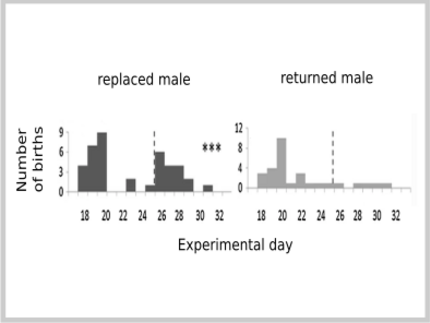Pregnancy replacement in mammals – all costs or hidden benefits for females?
The adaptive value of many behavioural processes may relate to very specific biological or social situations. The Bruce effect reported from different mammalian taxa describes the blocking of an early pregnancy in reaction to the confrontation to a new, unknown male. It probably has high energetic costs for the female, especially if a broader, less mechanistic definition of the pregnancy termination also in later stages of the pregnancy is applied. The adaptive value has been debated as a counterstrategy to potential future infanticide by the new male (infanticide avoidance hypothesis), but also lab artefacts were considered since in rodent species the effect was reported only from laboratory conditions. We (Eccard et al. 2017) showed in rodents in experimental, near natural conditions that the Bruce effect was restricted to isolated, breeding pairs and may be adaptive in fluctuation rodent populations during low density phases. We also found that half of the test females replaced pregnancies when encountering a new male while the other half did not, which raised questions about the adaptive value and biological function of the process, potentially in mate choice. In the current project we will experimentally disentangle potential adaptive and mechanistic explanations for pregnancy replacements, namely sequential mate choice or inbreeding avoidance.
The project is funded by the German Research Foundation (DFG).
Publications
Vodjerek L, Eccard JA (2025) Dated and related? No evidence for inbreeding avoidance in small mammal females. Ethology
Vodjerek L , Firozpoor J , Rödel HG , Eccard JA (2025) Risking infanticide or losing precious time? Delay of reproduction in a short-lived mammal. Open Access Behavioral Ecology, Volume 36, Issue 4, July/August 2025, araf041, doi.org/10.1093/beheco/araf041
Eccard JA, Dammhahn M, & Ylönen H (2017) The Bruce effect revisited: is pregnancy termination in female rodents an adaptation to ensure breeding success in pairs in low density phases? Oecologia 185: 81-94. https://link.springer.com/article/10.1007/s00442-017-3904-6

